An Abudance of Wildlife: The Importance of Eco-Design
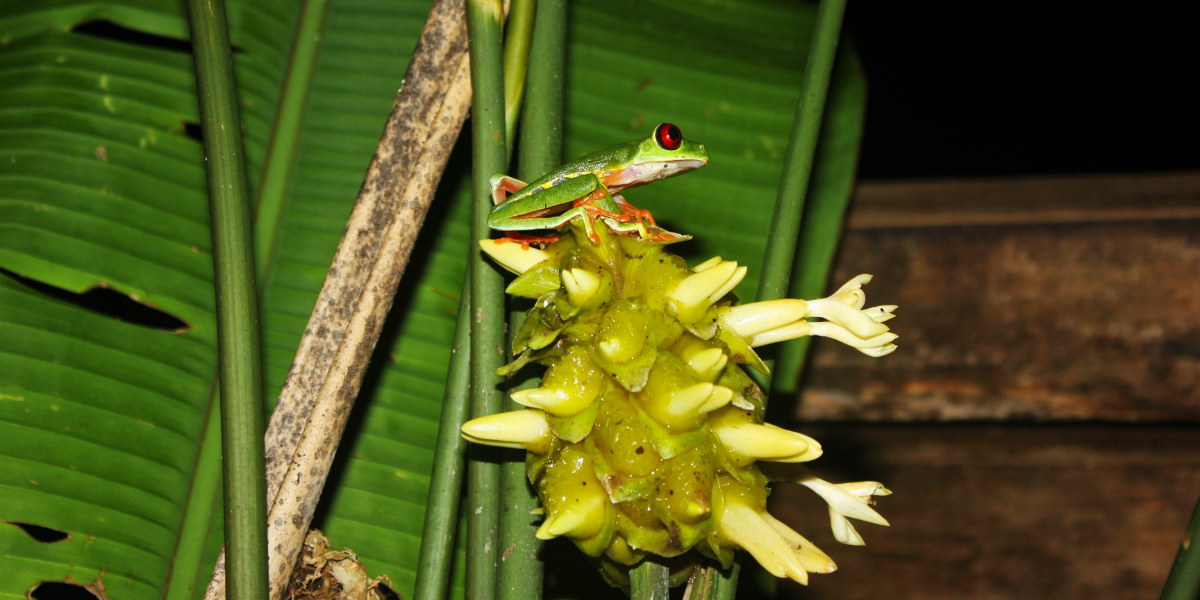
Sloths climbing tree trunks, howler monkeys foraging in the branches, agoutis running under the cabins, toucans flying overhead, red-eyed tree frogs laying their eggs by the pond at night, and an olingo passing silently through the darkness.
We’ve been travelling in Costa Rica for six months now and we have never stayed in a place so alive with wildlife as La Kukula Lodge. As we witnessed yet another troop of howler monkeys scouring the trees above our balcony, we realised the important role eco-design played in allowing the lodge to exist in harmony with the jungle.
- Cabins at La Kukula Eco-Lodge in Costa Rica
The Importance of Eco-Design
The aim of sustainable building design is to reduce environmental impact. Pepo, the affable owner of La Kukula Lodge, enthusiastically told us that they worked closely with architects over the course of two years to design a structure that would work with the Costa Rican climate and environment.
The cabins at the lodge are constructed with teak wood, which is sustainably grown on Costa Rican plantations for commercial use. Its durability and natural weather-resistant qualities make it an ideal building material for tropical climates . Unfortunately, many of the hotels in Costa Rica are built from giant trees that were hundreds of years old when they were felled. These trees don’t make for long-lasting lumber and the wood needs to be replaced. By using teak, Pepo avoided cutting down trees and damaging the surrounding jungle.
La Kukula Lodge is built on an abandoned cocoa plantation, which – unlike banana plantations – left the largest trees standing for shade. With those important trees in place, reforesting the smaller trees is a much quicker process and animals can return (and have) in greater numbers. In order to increase the canopy for wildlife, the lodge has planted a rows of new trees, including cecropias which feed sloths, monkeys, toucans and kinkajous; mountain almond trees which are good for green macaws; and various other hardwood and fruit trees.
The extremely thoughtful eco-design at the lodge has ensured that the existing animals’ habitats are disturbed as little as possible. The cabins are built on raised platforms leaving the ground space underneath the cabin free for animals – and they do use it, whilst in the shower I saw an agouti run right out from under the cabin and into the jungle. The trees around the cabins are naturally dense and the surrounding paths are very narrow so as to maintain an unbroken canopy sweeps overhead, this allows troops of howler monkeys and other animals to forage and cross deeper into the jungle.
Eco-Design for the Costa Rican Climate
Costa Rica is one of the world’s greenest countries with over 90% of their energy coming from renewable resources and big plans to be entirely carbon neutral by 2021. At all of the eco-lodges we’ve visited, solar panels are being used to heat water. In line this ethos, none of those lodges has air conditioning.
Not only does air-con negatively affect the environment by guzzling energy and releasing carbon emissions, but moving between the high humidity outside to a room that’s pumping cold artificial air isn’t good for your breathing either. Coming from the UK where air-con is pretty much non-existent (the air is cold enough, right?) and after living out the year in our sweaty apartment in Taiwan without one, the thought of having an air conditioner doesn’t even cross mine and Luke’s mind. In Costa Rica however, where the tropical climate can get really humid, there are a lot of tourists who feel a room without an air-con is just suffering.
Eco-design harnesses alternative methods of heating and cooling, meaning that air-con isn’t needed to keep the room cool. Stepping into our room for the first time, we immediately noticed a fresh smell and we were relieved by how cool the tiles felt on our bare feet. Unlike many other rooms that we’ve stayed in while travelling in Costa Rica, the cabins here avoided that slightly damp smell which comes from a combination of cheap wood and humidity. By designing cabins with high ceilings, good ventilation and shaded windows, the room stays naturally cool.
An Abundance of Nature in Costa Rica
During our nature escape at La Kukula we met nature photographer and snake enthusiast, César Barrio, also known as Doc Frog. While on a hunt for a yellow eyelash pit viper (which I didn’t want to find), he showed us an incredible amount of frogs, including Costa Rica’s famed red-eyed tree frog. We watched him comically splash around in La Kukula’s tiny pond which he discovered, in awe, is home to three different species of turtle! When it comes to wildlife, eco-design really makes a difference; the abundance of wildlife at La Kukula Lodge speaks for itself.
- Green and black dart frog living at La Kukula Eco-Lodge in Costa Rica
What’s your opinion on eco-design? Have you ever stayed anywhere with such incredibly thoughtful eco-design as La Kukula Lodge?
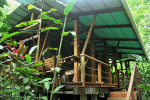
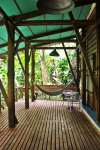
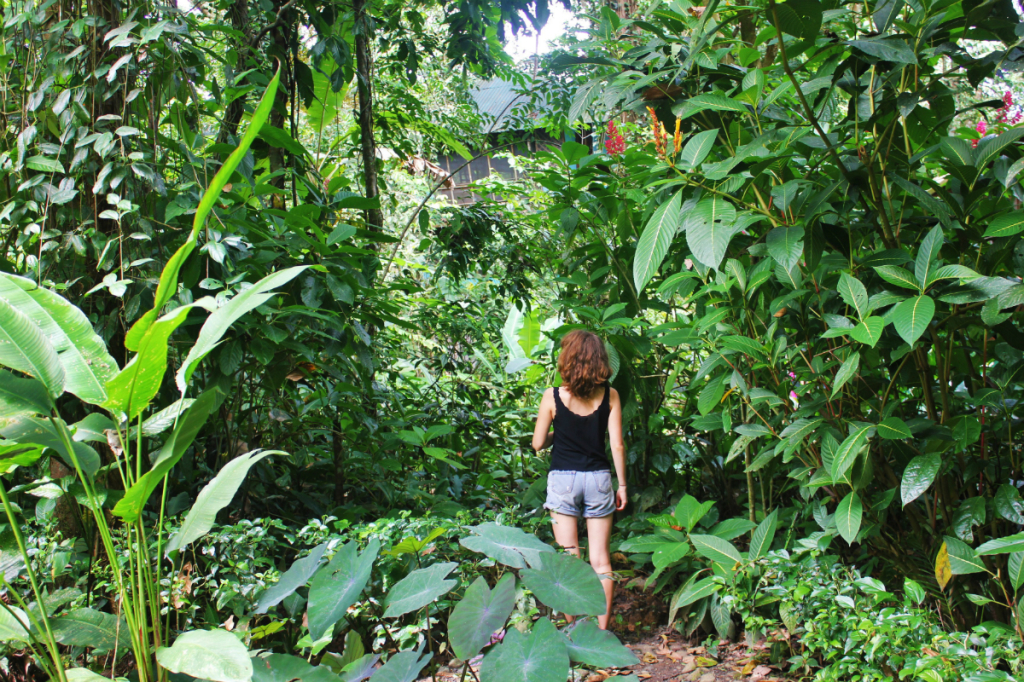
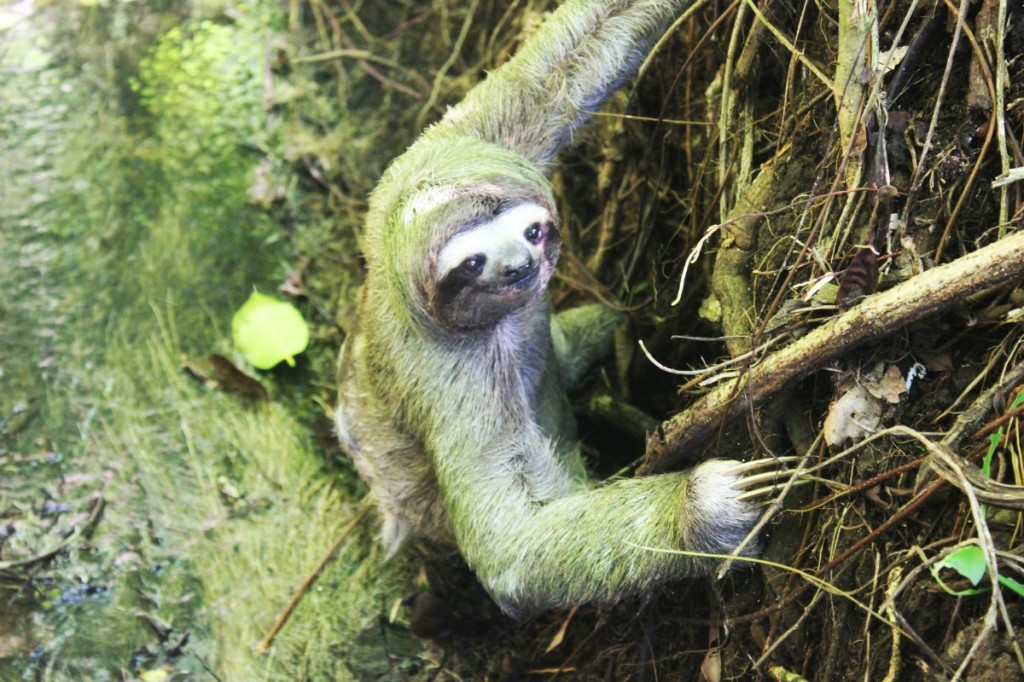
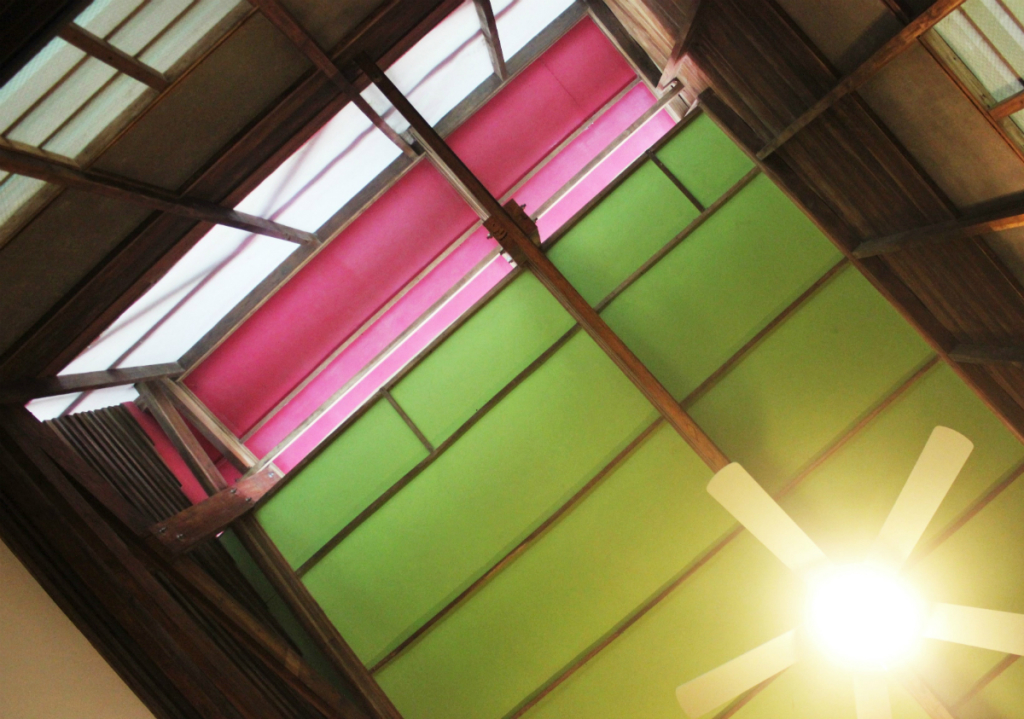
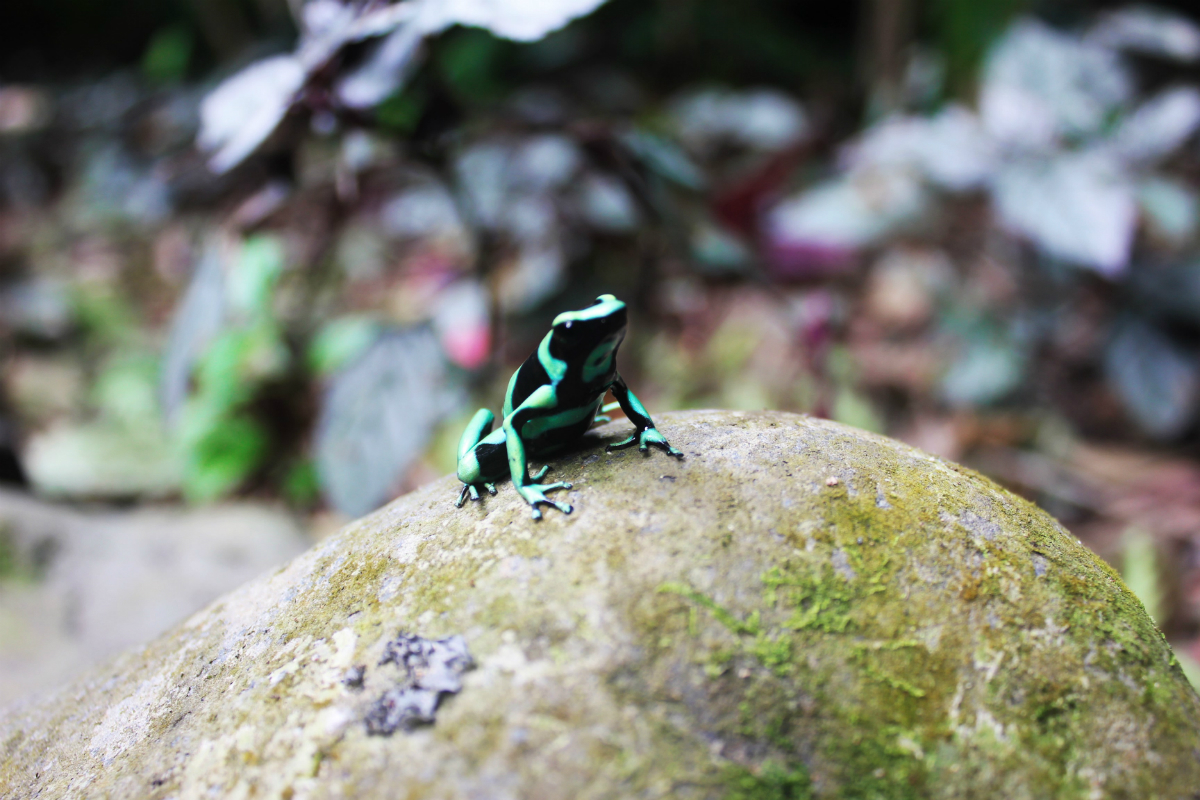
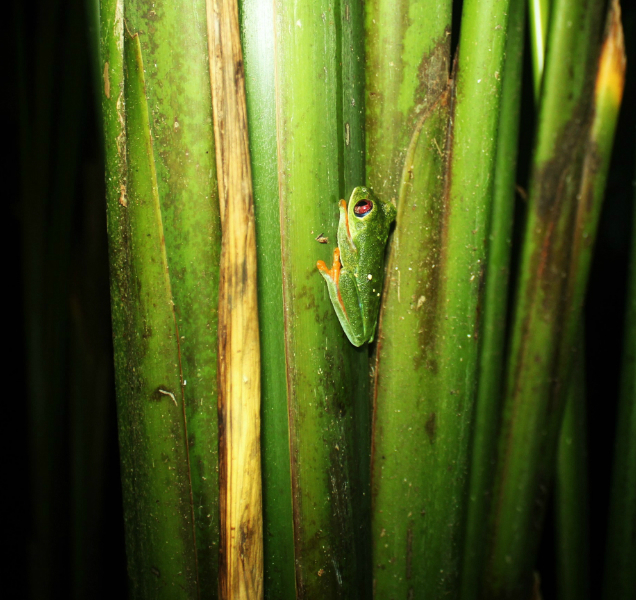
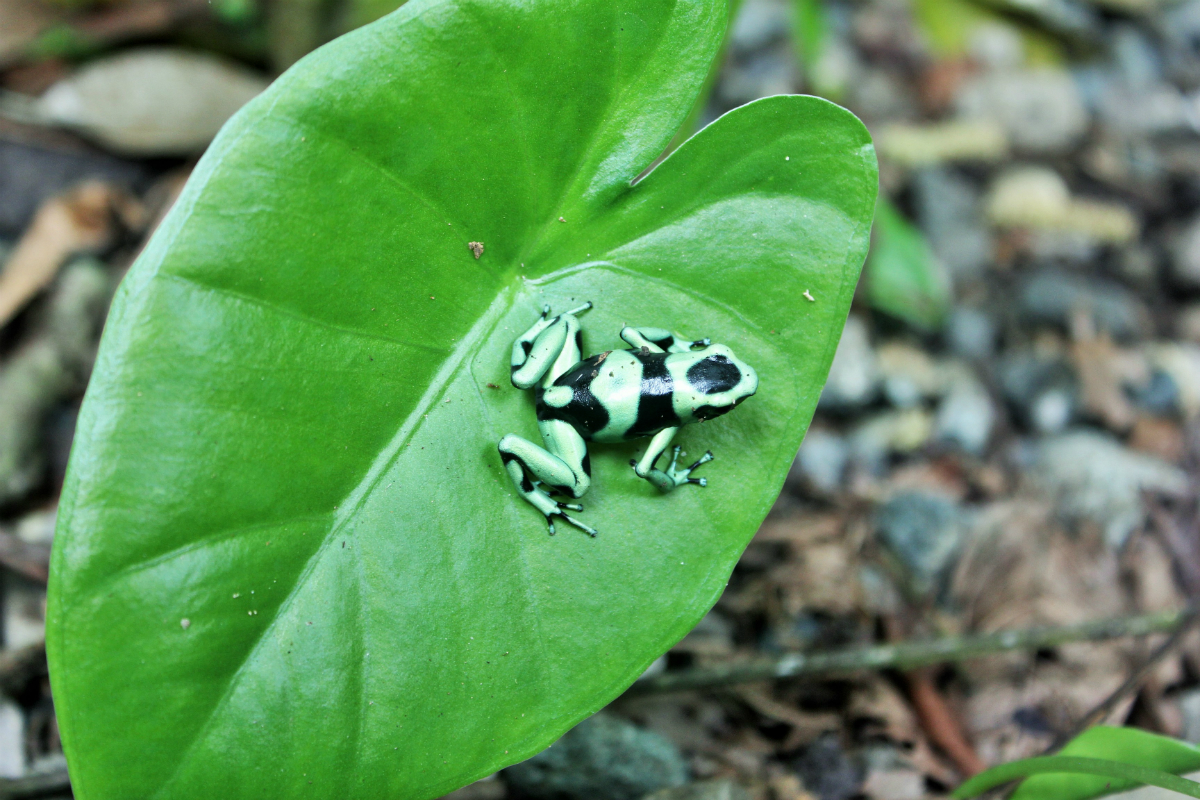





Escaping Abroad
The La Kukula Lodge is one of the most incredible places I’ve had the pleasure of staying at! There were red-eyed tree frogs singing right outside the door. Sloths in the trees. And 2 incredible wildlife parks within a few miles.. writing this is actually making wish I were still there!
Charlie on Travel
Hey James, that’s awesome that you stayed there too. Definitely at the top of my list when it comes to incredible places to stay and glad to hear you felt the same. Yes, lots of red-eye tree frogs – and it hadn’t even rained while we were there. I’m actually really worried that after staying there, I’ll never find anywhere else nearly as good on my travels!! (I’m only half joking!)
Franca
Great post! This place is fantastic Charlie. I really like what they do in order to respect the surrounding environment and more importantly trying not to destroy it and interfere too much with it. I wish everywhere people would give more importance to the environment but I guess in order to push local companies to focus more on eco-friendly solutions, it’s up to us as travellers to demand them more. Taking your example about air-conditioning, if we didn’t ask so desperately for it they probably wouldn’t implement it everywhere but try to use alternative and more natural solution that can still give enough ventilation and coolness. If the demand changes they’ll have no choice but adapt and everyone will benefit from it, the environment especially :)
Charlie on Travel
Thank you, Franca! Oh it was so amazing and we felt so privileged to stay in a place where the owners really cared for and respected the environment and wildlife. Costa Rica in general works very hard toward eco-friendly solutions and are definitely an excellent example for other countries. I have unfortunately met a lot of travellers staying at incredible eco-lodges (also often rural and generating power with solar panels) who were complaining about the lack of air-con. It’s just about changes habits is all. Thanks for reading, as always :)
Agness
I’ve never been there, but it’s absolutely beautiful! <3 Looooooooove at first sight!
Charlie on Travel
Yesss!! :) I’m sure you would love it, Agness!!
Charlie on Travel
I completely agree, and the wildlife there is beautiful!